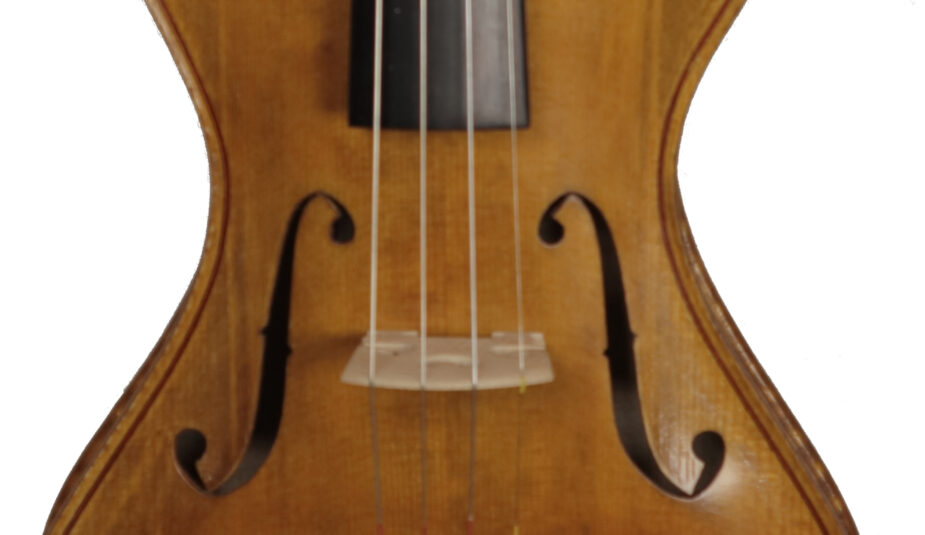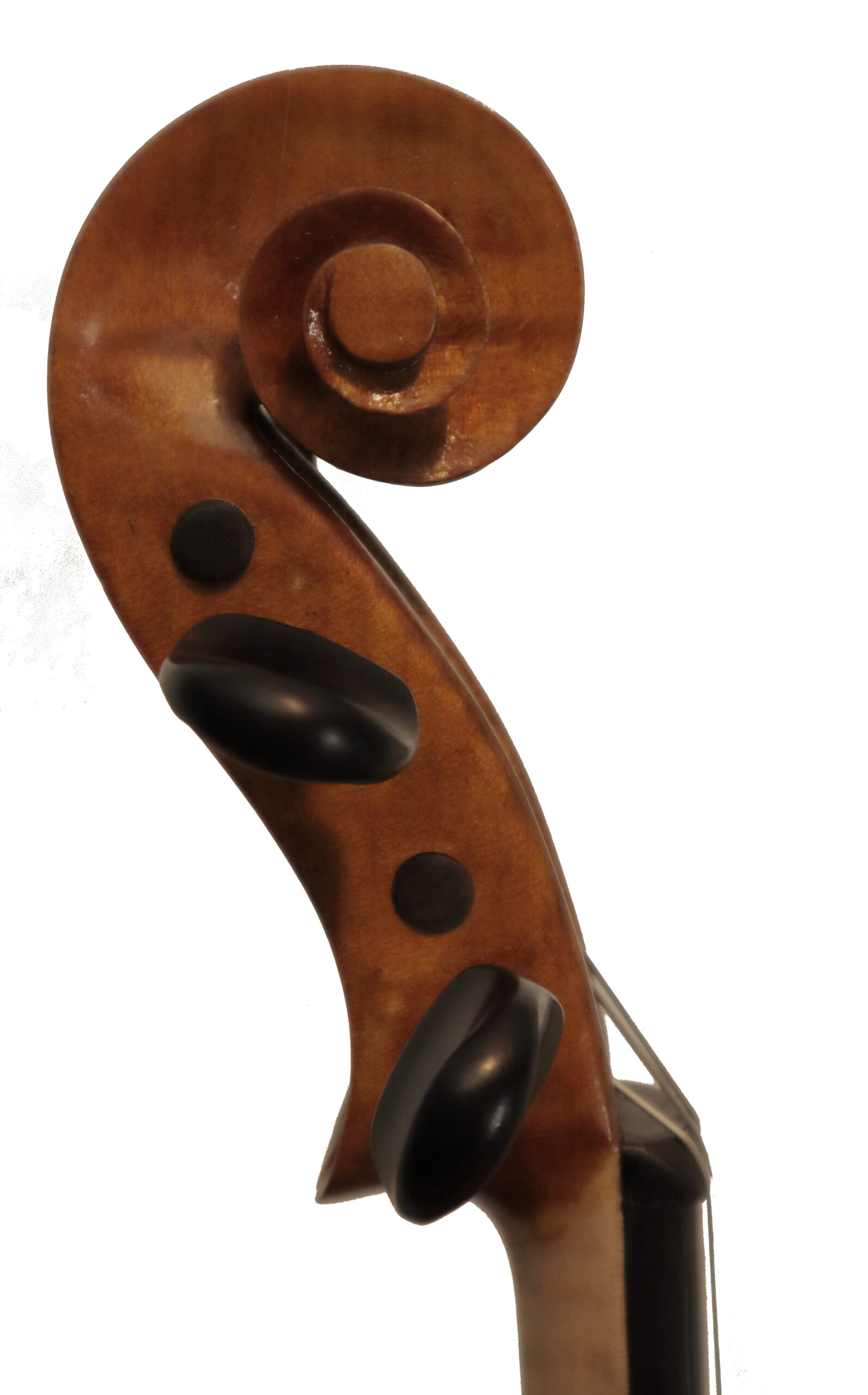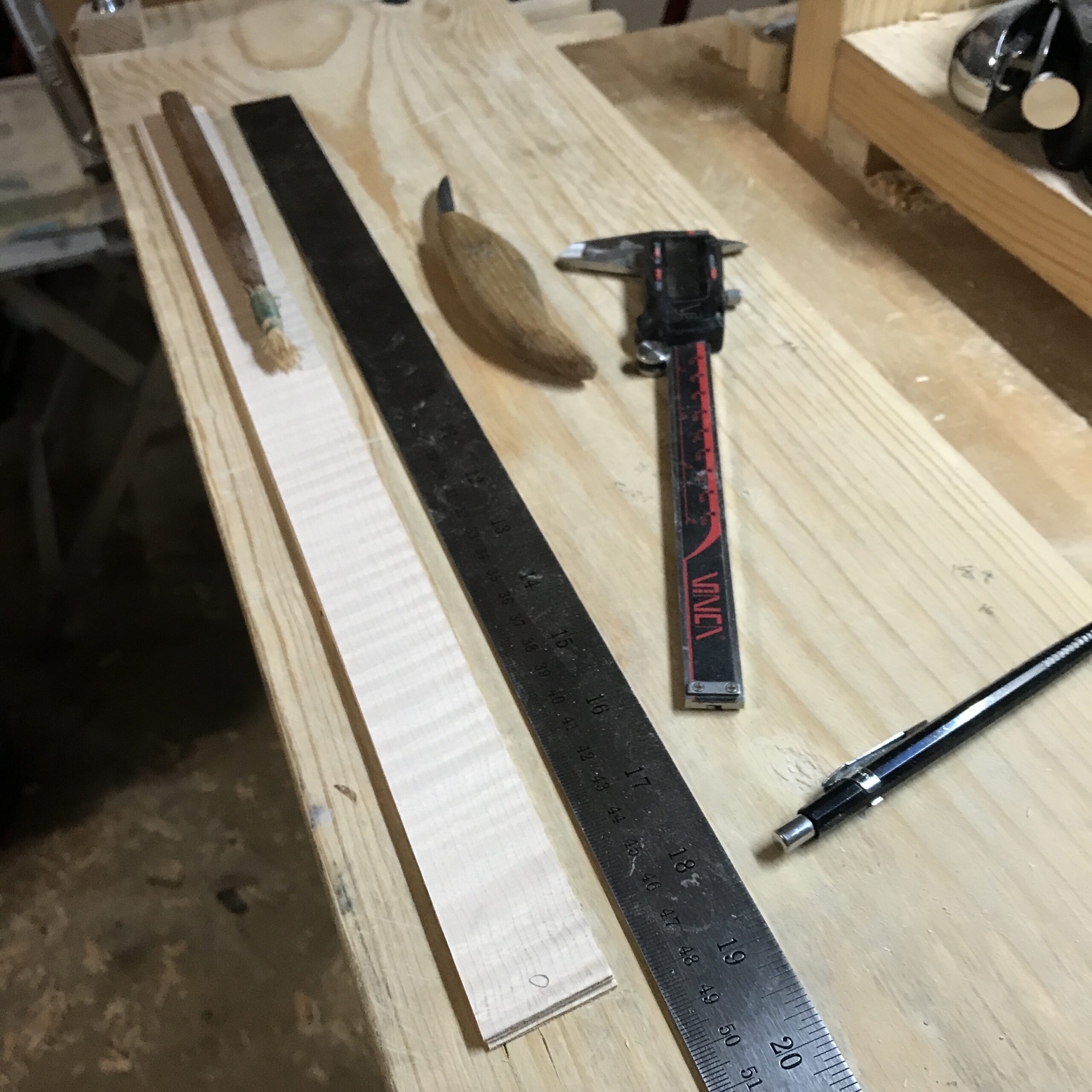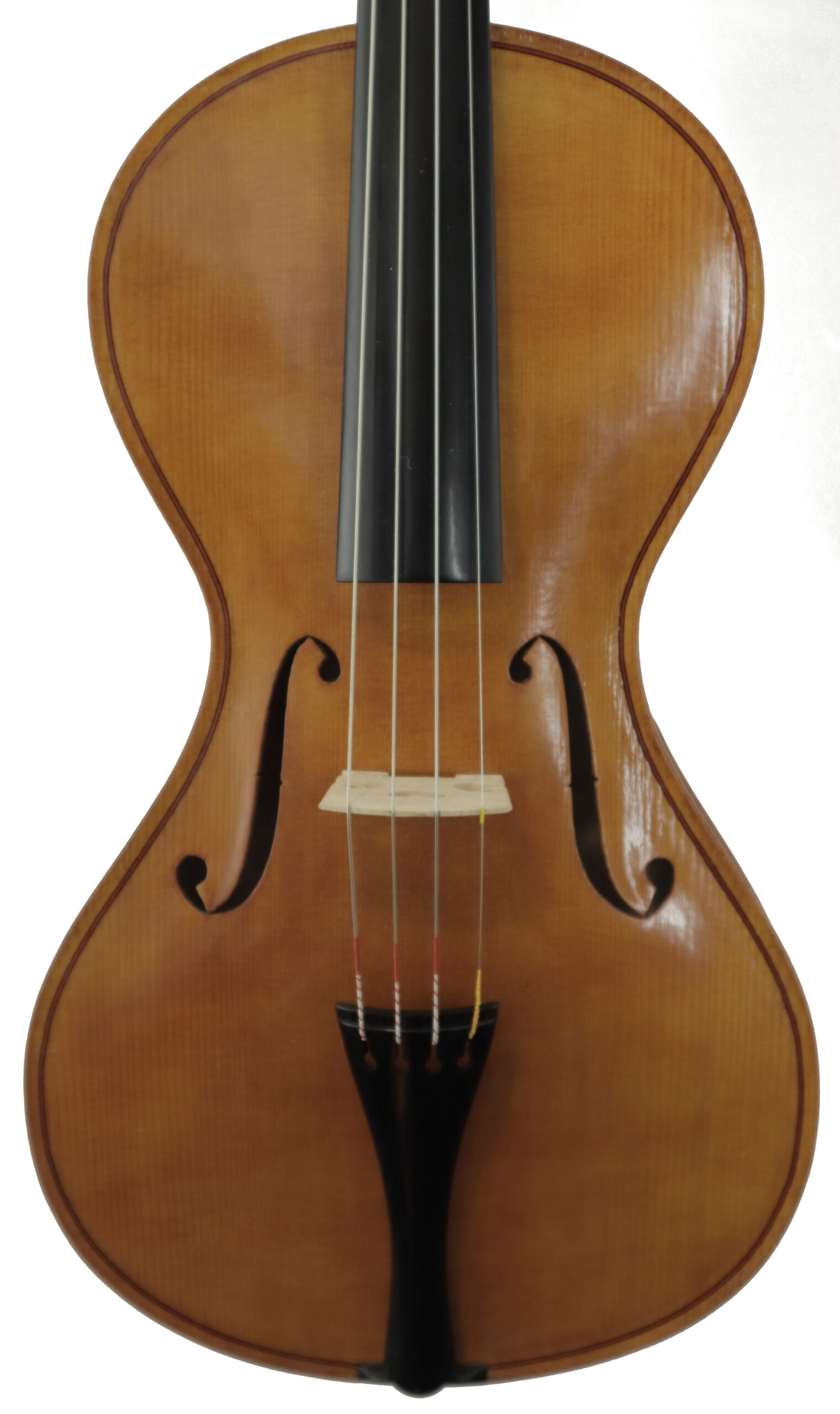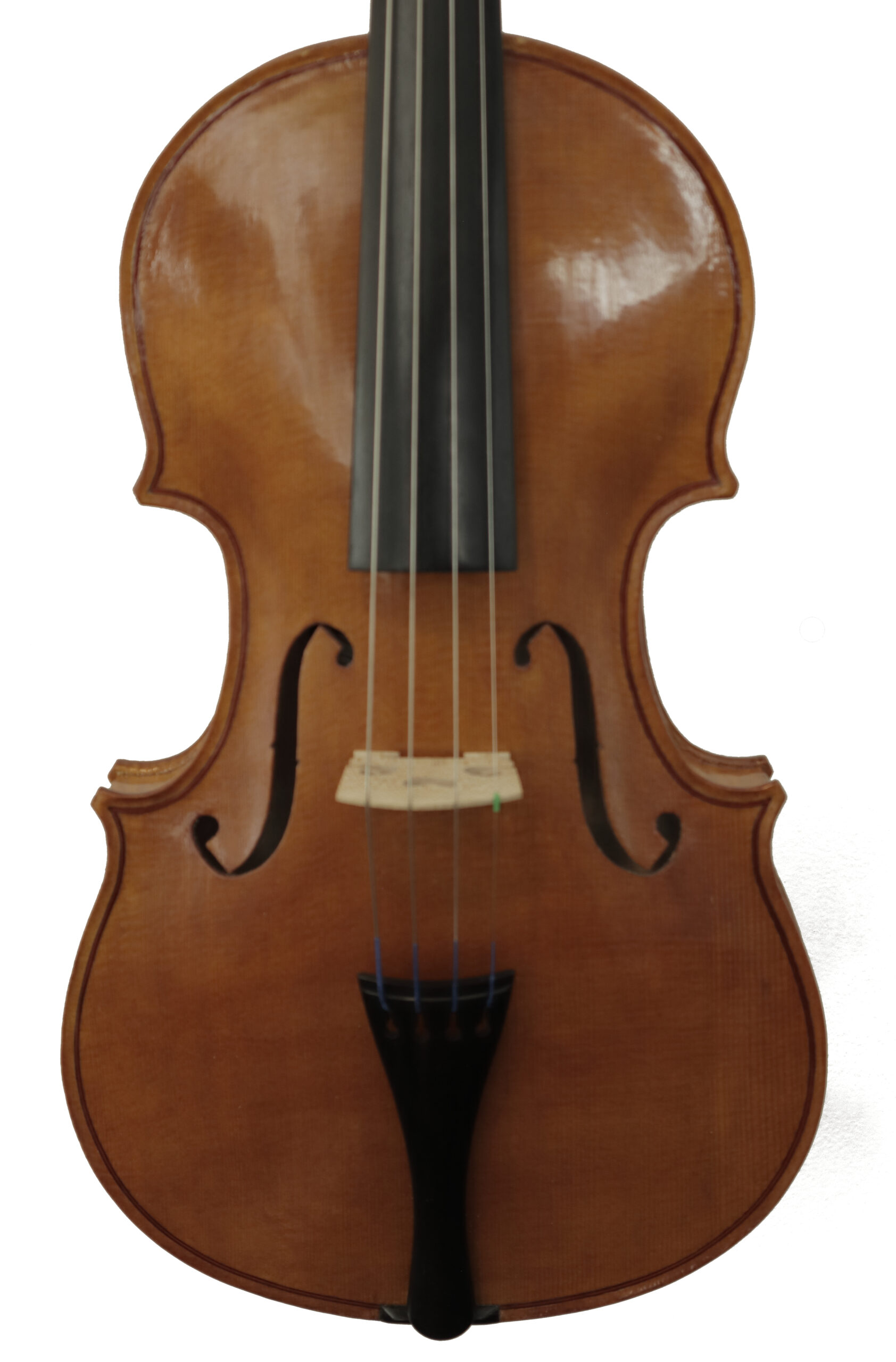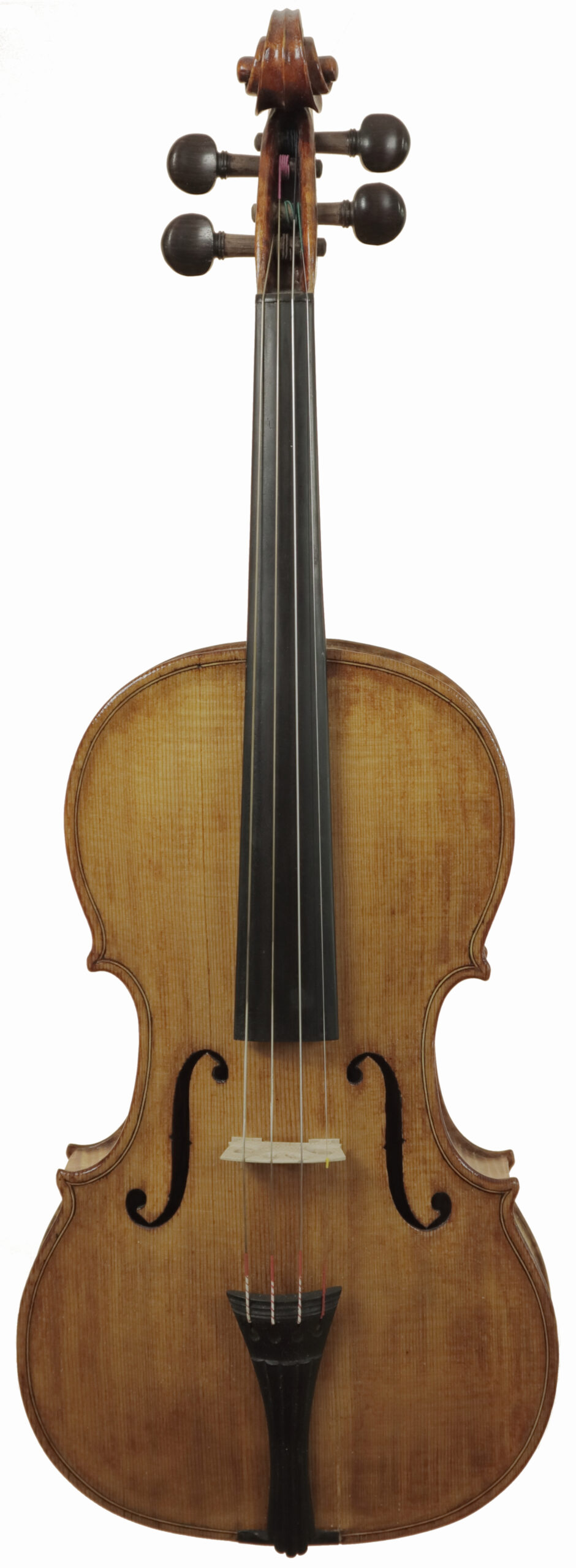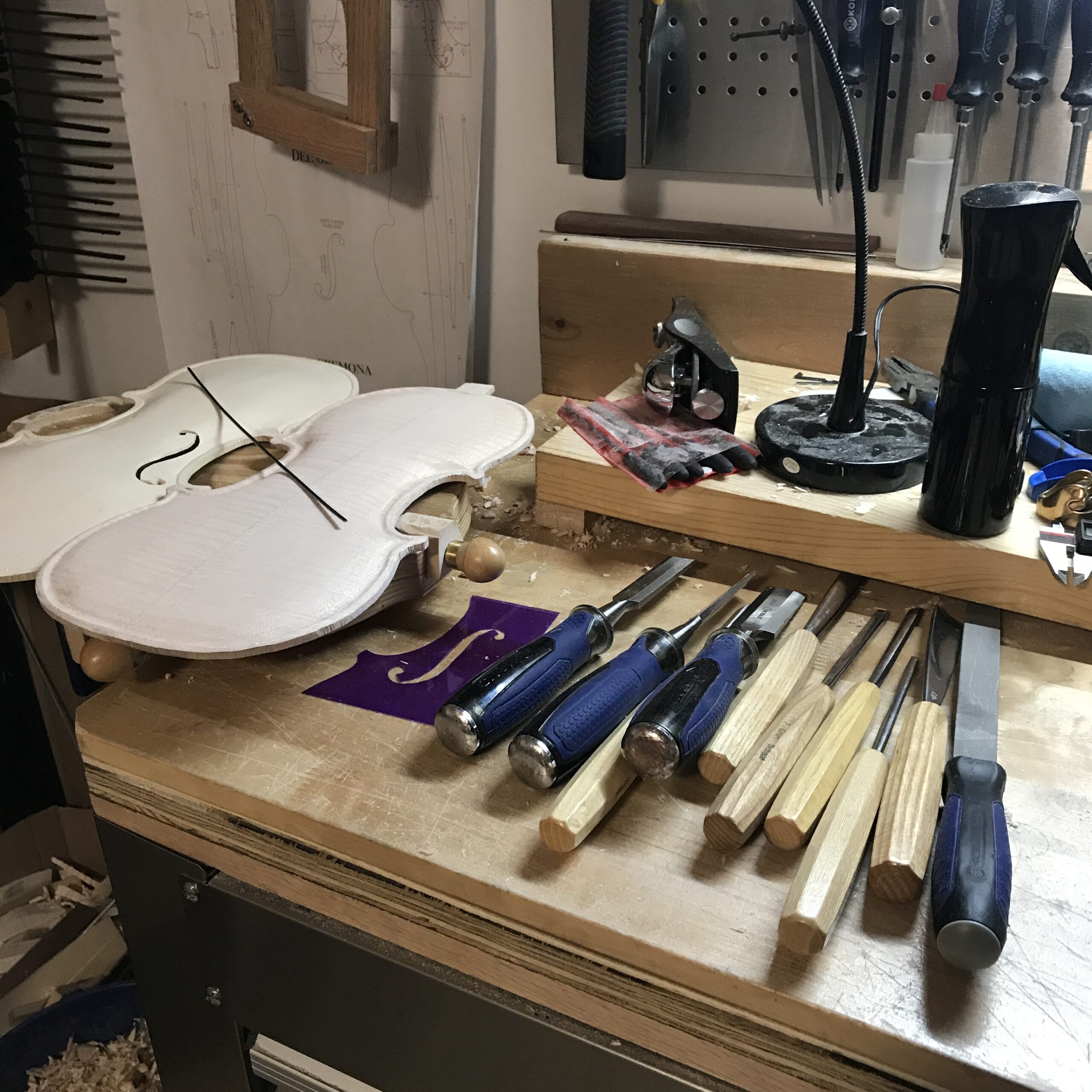Maker: Roman Clarkson
Year: 2021
Serial: 21-4
Book an Appointment to see this instrument or Contact Roman Clarkson with your questions.
Fidelity
-the quality or state of being faithful
Merriam-Webster’s Collegiate Dictionary
This violin is a continuation of the cornerless violin series designed and handcrafted by luthier Roman Clarkson. This instrument has a rich and dynamic sound with a full bottom end and smooth E string. It plays smoothly, easily moving from quiet to loud. Fidelity was named for Roman’s focus at the time on developing his design-build philosophy.
Fidelity has a guitar-style body with no corners. It is finished with a spirit varnish colored in a combination of red, brown and yellow. This violin has a smooth satin finish in red and brown tones, created by the ground color of Missouri walnut stain and a spirit varnish.
The red maple bottom plate was selected by Roman because the flames radiate in the light and the tightness of the front plate beautifully shows the character of the wood.
The length of the violin is 356 mm long. Roman keeps the mensur at the standard length of 196 mm for standard playability. The after-string length is a standard 56 mm which gives Fidelity a quick response.
Violinists have commented on the ease of play and robustness of sound with Fidelity. This violin is sure to be pleasing audiences for years to come.
